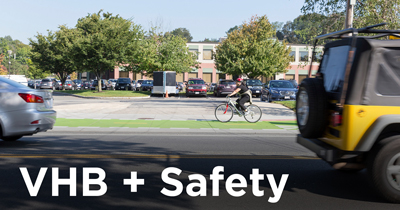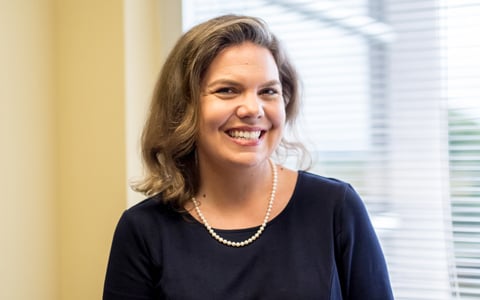
Meet Kim Eccles, a transportation service leader at VHB and passionate highway safety professional. Kim's knowledge ranges from transportation safety evaluations to crash data analysis and she is not afraid to push the boundaries of innovation. Her project experience is vast and focused on areas such as pedestrians, intersections, safety conscious planning, bicyclists, and visibility.
Her enthusiasm for safety is evident in her work, including her leadership on the My Street submittal for the United States Department of Transportation’s (USDOT) Solving for Safety Data Visualization Challenge and for receiving the TRB K.B. Woods Award for research on rural intersection sight distance. Kim is a dynamic thought leader who seeks out ways to advance transportation safety while also inspiring and mentoring others across the industry.
With the USDOT’s recent announcement of the FY23 Notice of Funding Opportunity (NOFO) for Safe Streets for All (SS4A) grants, we met with Kim to hear more about the value of this grant program, where she sees the most opportunity for safety change, and helpful resources for safety planning in all communities.
VHB: Where do you see the most significant opportunities for agencies to bring about transportation safety change?
Kim: The opportunity to affect change lives at the local level. Much of my work has been with state Departments of Transportation (DOTs) which have Strategic Highway Safety Plans (SHSP) that help guide their safety efforts. However, in most states, the DOT is responsible for less than 20 percent of the roadway and over half of the nation’s fatalities occur on locally owned roads. The SHSP helps to guide the use of Highway Safety Improvement Program (HSIP) funds, with many states having mechanisms in place to use their funds on local roads. While the State SHSP can help local agencies to address general emphasis areas, it may not get down to the level of detail needed for local agencies to identify and address their specific safety needs.
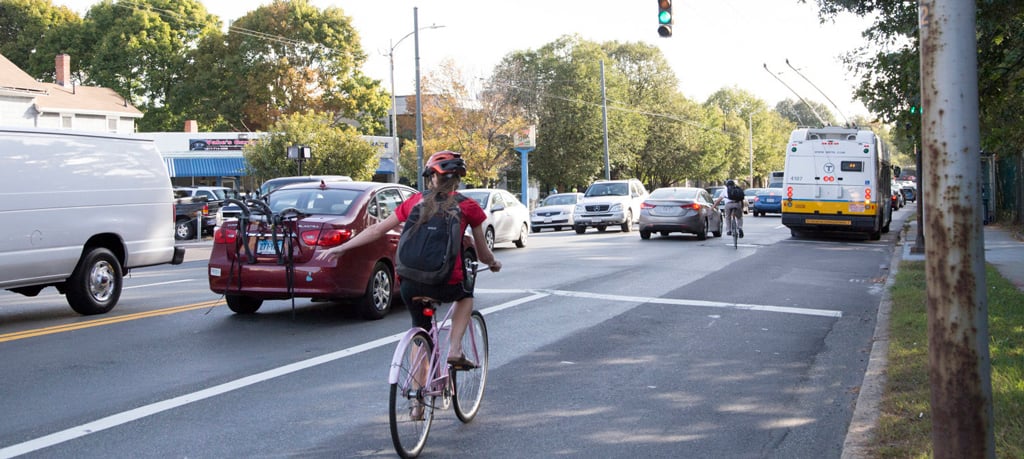
VHB: You’ve talked about your experience developing an understanding for local government and it’s not what one would expect. Can you elaborate on this experience and how its shaped your outlook?
Kim: When I was in high school, I took an internship at radio station WOAP in Owosso, Michigan. I lived in the next town over in a very small farming community that wasn’t large enough for the radio station to devote paid staff to cover the town meetings. I was responsible for the 5:00 AM local report. I think the only other people who heard me were farmers starting their day.
My favorite beat was city council meetings. The city manager, city council, volunteer fire chief, and many of my neighbors would discuss issues on Monday evenings at the fire station, which is where I learned a lot about local government. For example, business owners knew a lot about transportation issues, local farmers had a lot of insight into drainage needs, and Monday night football had an impact on the length of time the town manager would allow an issue to be discussed! In all seriousness though, I learned that these meetings created opportunity to affect change where people in the community were coming together and providing the town leadership the insight necessary.
VHB: What first steps would you advise a local agency to take to identify and address their community’s specific safety needs?
Kim: Local agencies are starting to realize that a plan is needed to guide their safety efforts, such as a Local Road Safety Plan (LRSP) or a related Vision Zero Plan. An LRSP helps to provide focus on safety concerns at the locally owned or maintained roadway level and can resonate more with local partners. Without significant safety improvements and contributions at the local level, we will not be able to affect change. After all, 75 percent of all roads are maintained by local agencies and half of fatalities occur on locally owned roadways.
LRSPs have had a positive impact on local road safety and in 2017 FHWA identified them as a Proven Safety Countermeasure.
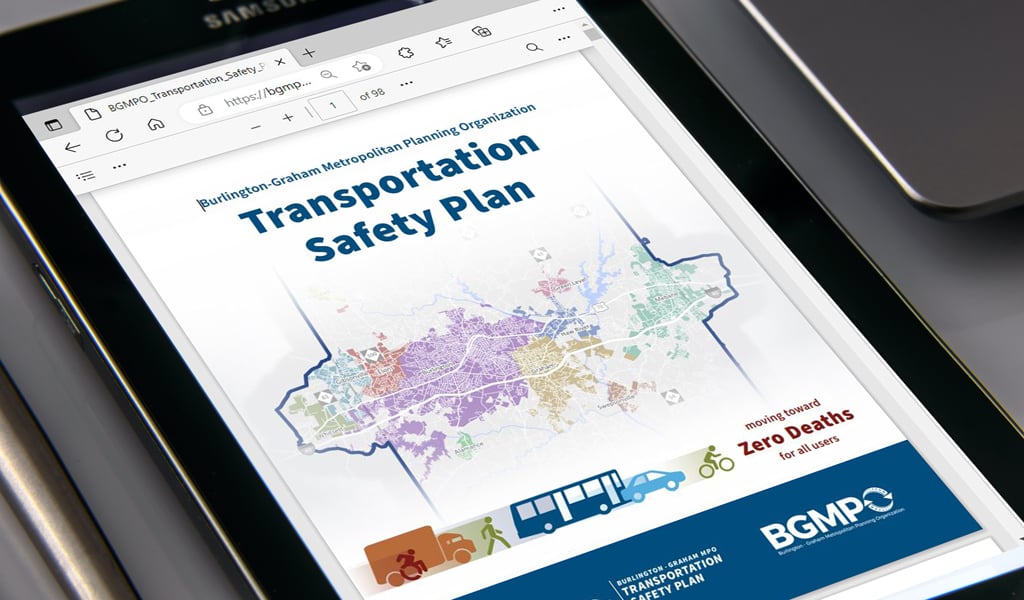
VHB: With the recent FY23 NOFO for SS4A grants now live, how can agencies pursue this to help with a LRSP?
Kim: There are two types of grant opportunities available for local governments, Tribal governments, and metropolitan planning organizations through the SS4A grants program: Planning and Demonstration Grant awards and Implementation Grant awards.
Planning and Demonstration Grants are available to help agencies develop LRSPs. One difference from last year’s grant cycle is the emphasis on demonstration projects and supplemental planning efforts, which presents an excellent opportunity for local agencies to pilot new designs, improvements, educational outreach, or enforcement activities. Supplemental planning could include road safety audits, lighting studies, parking studies, and other studies that enhance an existing plan and address safety concerns.
The anticipated award amounts have also changed for FY2023, which opens the opportunity for smaller efforts that you may not have considered for the first round of applications. Planning and Demonstration Grant awards have been updated to a range of $100,000 to $10M, and Implementation Grant award amounts are anticipated to be between $2.5M to $25M, providing flexibility of varying scales.
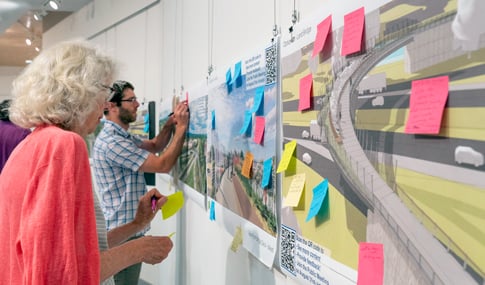
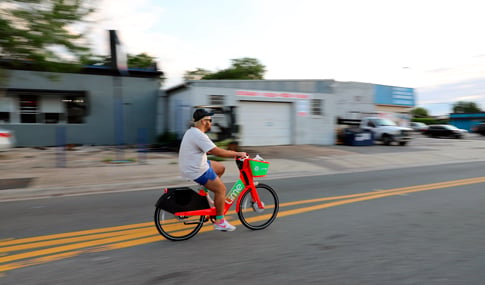
VHB: How can VHB provide support and assistance in developing LRSPs and pursuing SS4A grants?
Kim: VHB's knowledge of transportation safety, including safety evaluations, crash data analysis, and innovative solutions, can provide valuable insights and guidance to local agencies in identifying and addressing their specific safety needs. Our experience working with local agencies can help facilitate the development of local road safety plans that align with the strategic highway safety goals and priorities. VHB can also aid in navigating the FY23 NOFO for SS4A grants, including Planning and Demonstration Grant awards and Implementation Grant awards, to help local agencies pursue funding opportunities for safety projects.
Connect with Kim via email to learn more about VHB’s safety planning or visit VHB’s Safety page.

